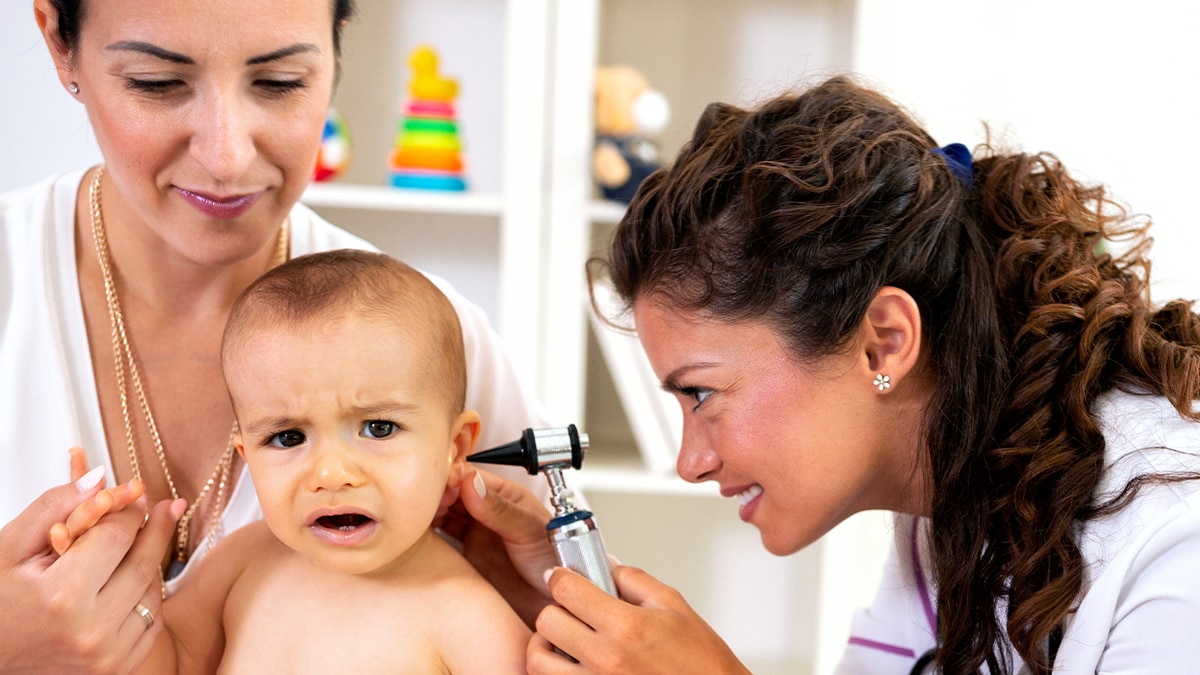At a glance
Newborn hearing screening is the first step toward early identification of babies with permanent hearing loss.

Infants and babies’ hearing can be checked
Do you know that your baby's hearing can be checked even before leaving the birth hospital? Many states, communities, and hospitals offer hearing screening for babies. A baby's hearing can be screened using Automated Auditory Brainstem Response (AABR), Otoacoustic Emissions (OAE), or both. The AABR test measures the brain's response to sound using electrodes.
Babies usually have their hearing screened while still in the hospital, either in the nursery or in their mothers' room.
All babies should have a hearing screening before they are 1 month old
Hearing screening is easy and is not painful. In fact, babies are often asleep while being screened. It takes a very short time—usually only a few minutes. Sometimes the screening is repeated while the babies are still in the hospital or shortly after they leave the hospital.
All babies who do not pass the first screening should have a complete hearing test before 3 months of age
Babies who do not pass hearing screening should be tested by an audiologist. An audiologist is a person trained to test hearing. This person will do additional testing to find out if there is a hearing loss. There are many kinds of tests an audiologist can do to find out if a baby has a hearing loss, how much of a hearing loss there is, and what type it is.
All babies with hearing loss should begin intervention services before 6 months of age
Finding a hearing loss early and getting into a program that helps babies with hearing loss (beginning before a baby is 6 months old) helps a child to
- Communicate better with others.
- Do well in school.
- Get along with other children.
Intervention services are types of programs and resources available for children and their families. An intervention might be:
- Meeting with a professional (or team) who is trained to work with children who have a hearing loss, and their families.
- Working with a professional (or team) who can help a family and child learn to communicate.
- Fitting a baby with a hearing device, such as a hearing aid.
- Joining family support groups.
- Other resources available to children with a hearing loss and their families.
